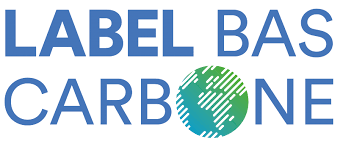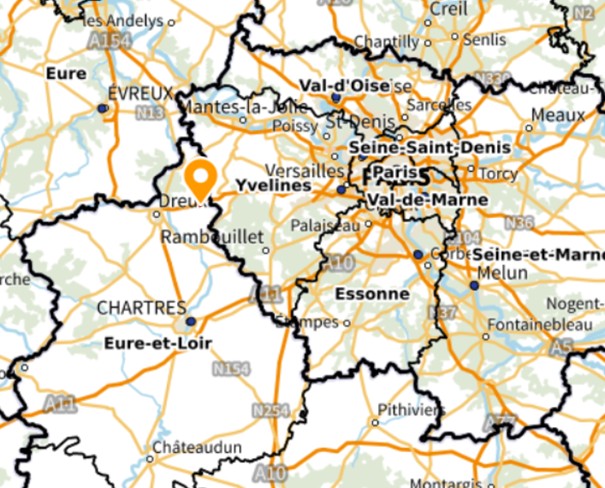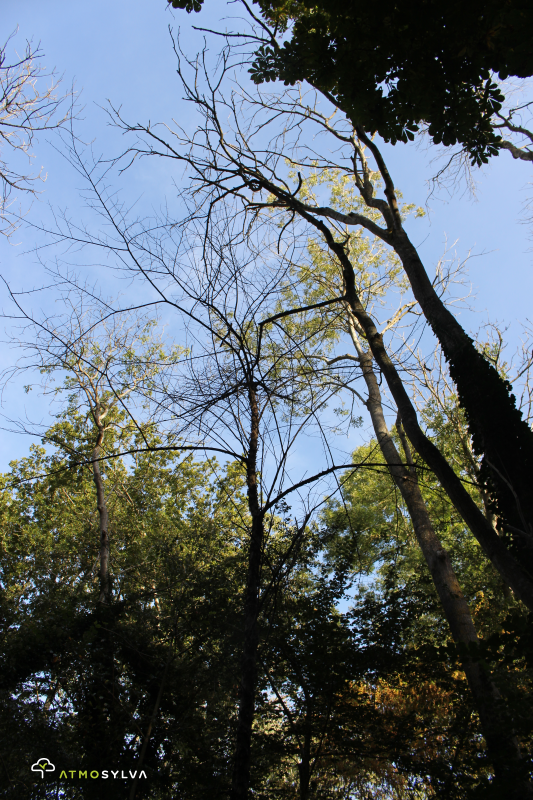Label Bas Carbone certified project
The project involves the reforestation of a 1.5 ha parcel of land in Broué, in Eure-et-Loir (Centre Val-de-Loire region). The aim is to restore a stand of ash trees that have been badly affected by chalarosis, a devasting fungal disease. This forest, located on the edge of the Yvelines department, is a haven for biodiversity in a predominantly agricultural landscape. The project involves the planting of a variety of broadleaved species, while retaining some habitat trees and two chestnut trees, a species threatened in mainland France. Part of the project includes valuable broadleaved trees: the plane maple and the small-leaved lime. Another part, at the edge of the plot, will be planted with a linear strip of Black walnut.
To the south of the wooded area concerned, a temporary stream borders the forest before flowing into the Andusse, and there is a forest pond in the immediate vivinity of the area to be planted. The project promoter wishes to preserve this very specific environment with deciduous species, as part of a biodiversity and landscape initiative linked to the Badonville farm. This farm offers local products, including saffron, and is part of a drive to promote the region.

Broué, Eure-et-Loir (Centre Val-de-Loire region), 15 km from Dreux
1,5 ha planted
Flat maple, Small-leaved lime, Black walnut
About 1156 trees


The project is located halway between the state-owned forests of Dreux and Rambouillet, marking a transition zone between the major forest massifs of the Ile-de-France region and the forests of Eure-et-Loir, a department with very little woodland (14% forest cover compared with a national average of 32%). Broué, located 15 km from Dreux and 50 km from Chartres, borders the Ile-de-France region (Yvelines) and is 29 km from Rambouillet. The surrounding landscape is dominated by intensive farming, with few wooded areas or hedgerows.
The area is part of the Beauce sylvo-ecoregion, a vast limestone plateau with little rainfall, where forests occupy just 5% of the land amidst predominantly agricultural areas. The few forest stands, which are often small and scattered, are mainly made up of coppice and poplar. The Badonville forest, covering an area of around 16 hectares and already visible on 19th century maps, is part of this fragmented landscape, where woodland is often limited to the banks of rivers or hillsides.
The plot has a sustainable management document: the project owner has signed up to the Code of Good Forestry Practice.
Label Bas Carbone certification the Broué project is part of the 'Reconstitution of degraded forest' method of the Label Bas Carbone, a certification examined and issued by the French Ministry for Ecological Transition (DREAL).

The aime of our project is to diversify the range of deciduous species by planting a mixture of Flat maples and Small-leaved limes, complemented by a line of black Walnut for landscape purposes.
In accordance with the diagnosis of potential biodiversity, the project retains a 0.16 ha portion of existing woodland on the right-of-way, as well as several habitat trees, 2 oak trees and another habitat tree located on a corner of the plot. This approach makes it possible to preserve key elements for local biodiversity while reconstituting a diverse and resilient forest ecosystem.
The project is located in an area devoid of ecological corridors identified in the SRCE (Schéma Regional de Cohérence Ecologique). The project will help to strengthen the local green network, while preserving this forest will help to improve the quality of water and aquatic environments, in conjunction with the woodland watercourses identified in the blue network.
This reforestation project preserves a green setting in the middle of farmland, preserving a habitat for biodiversity and the landscape. It is part of an overall approach supported by the manager of the Badonville farm, which promotes local saffron-based products, thus combining ecological preservation with the development of a sustainable local economy.